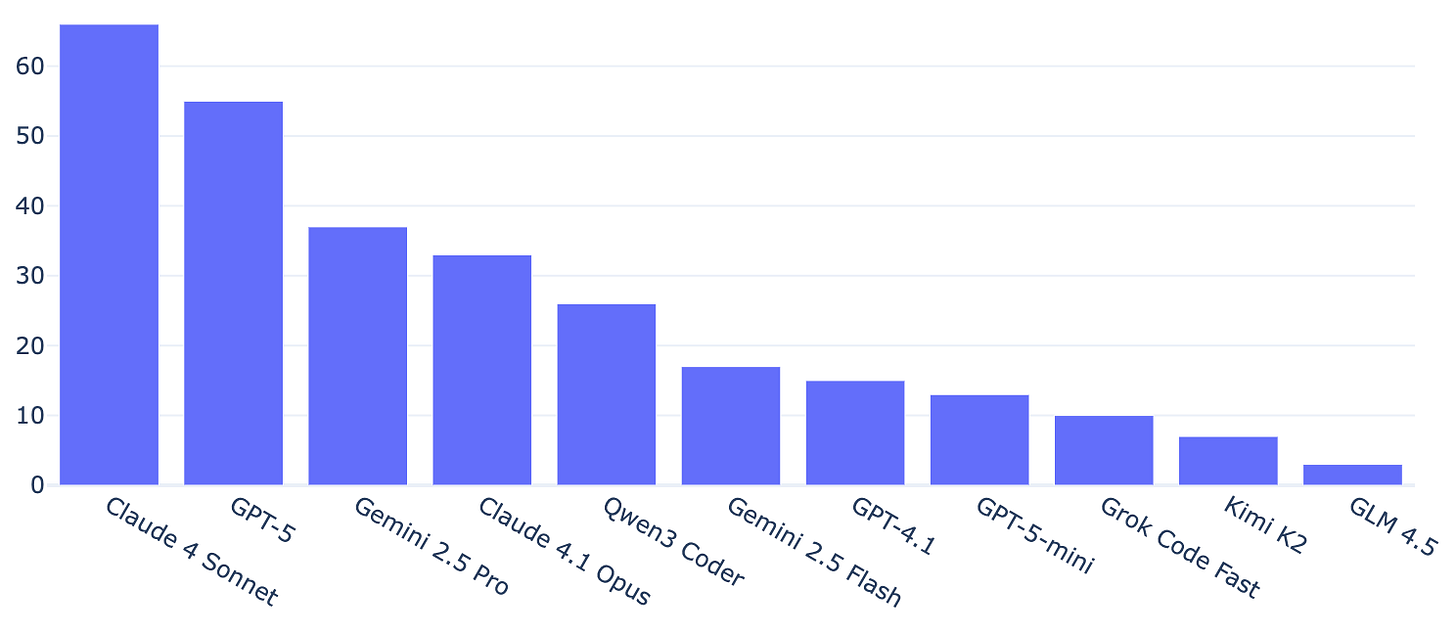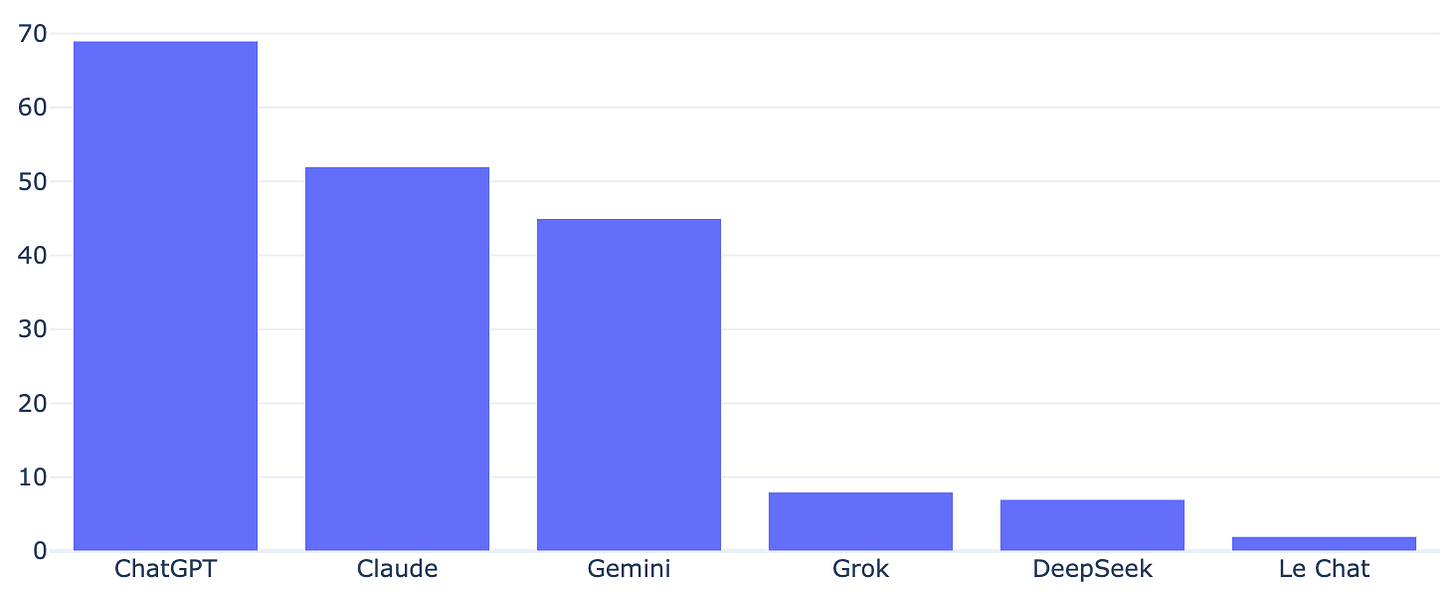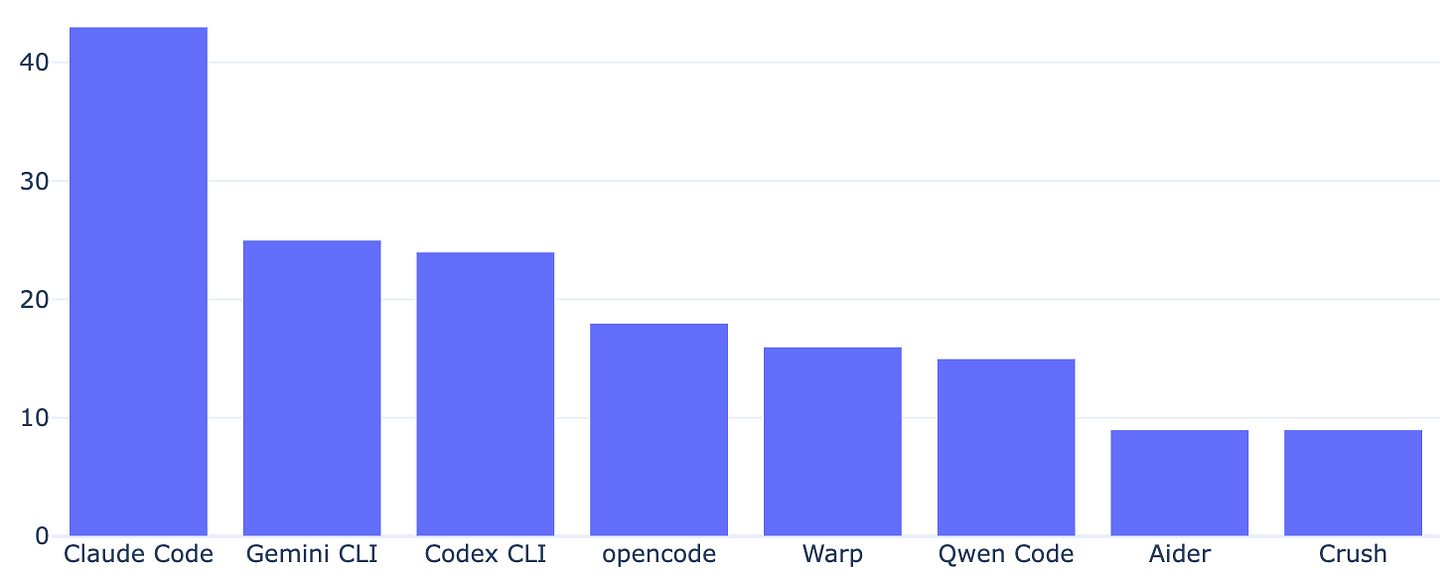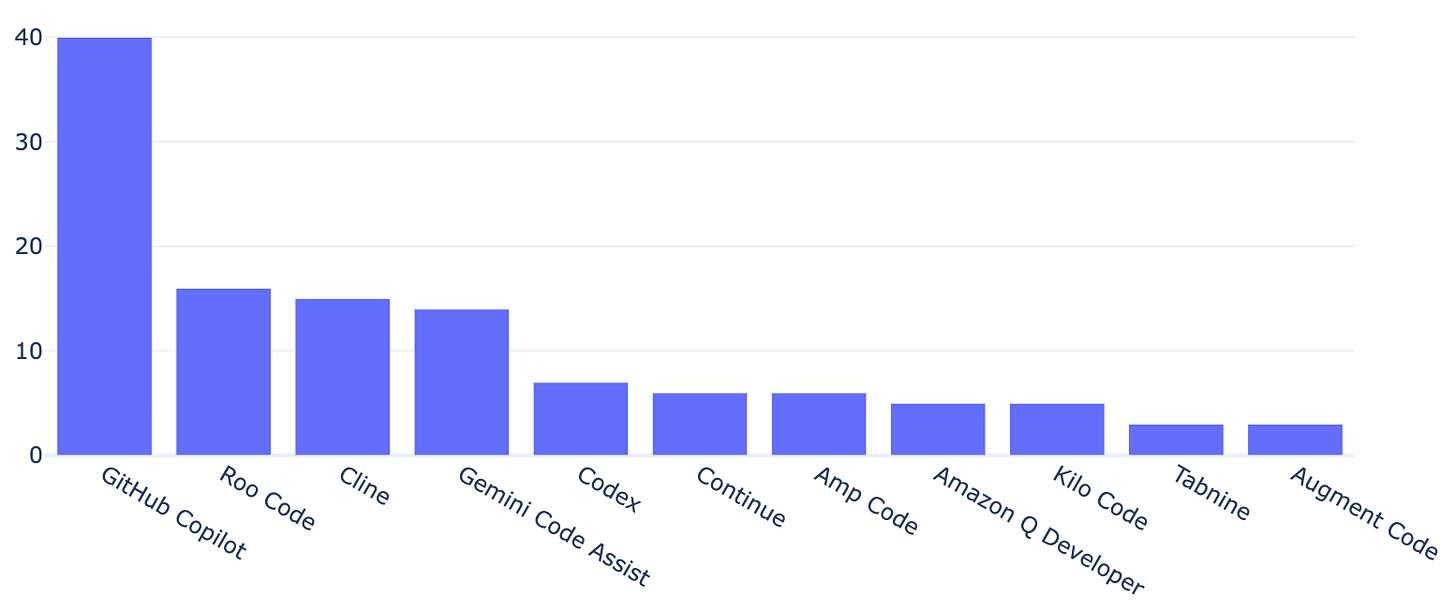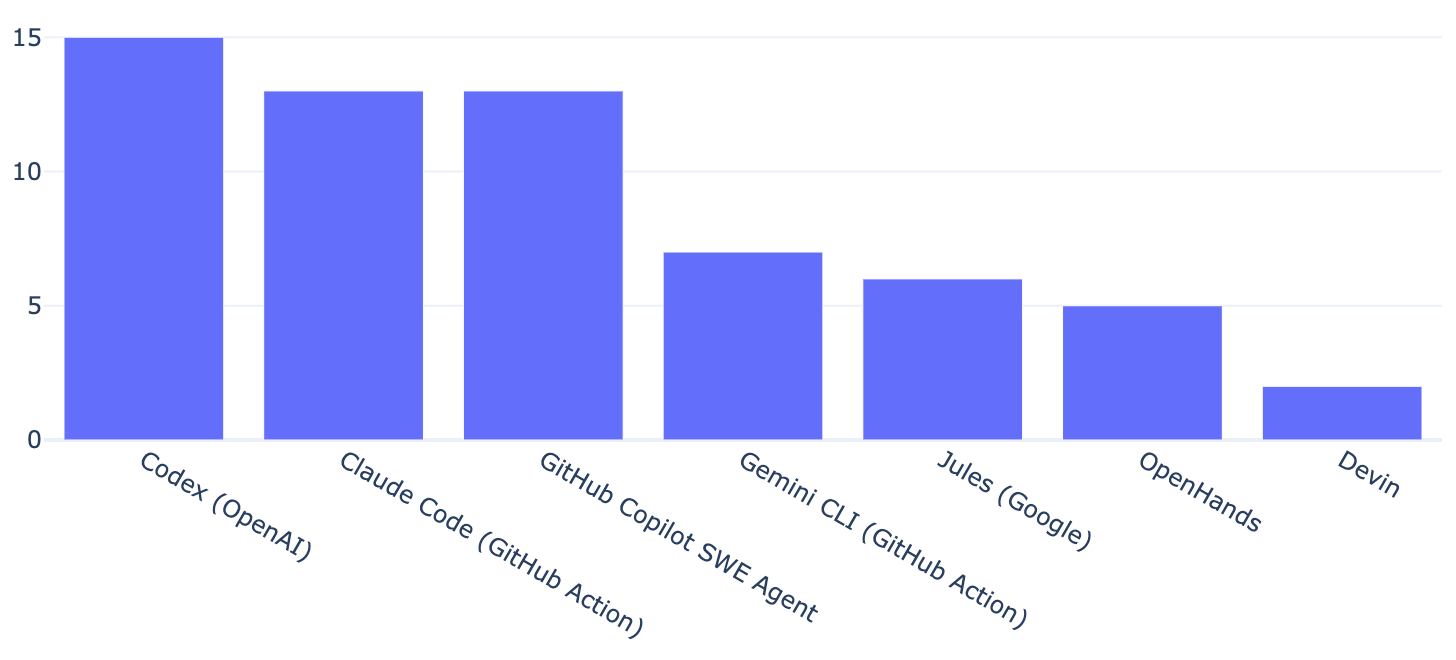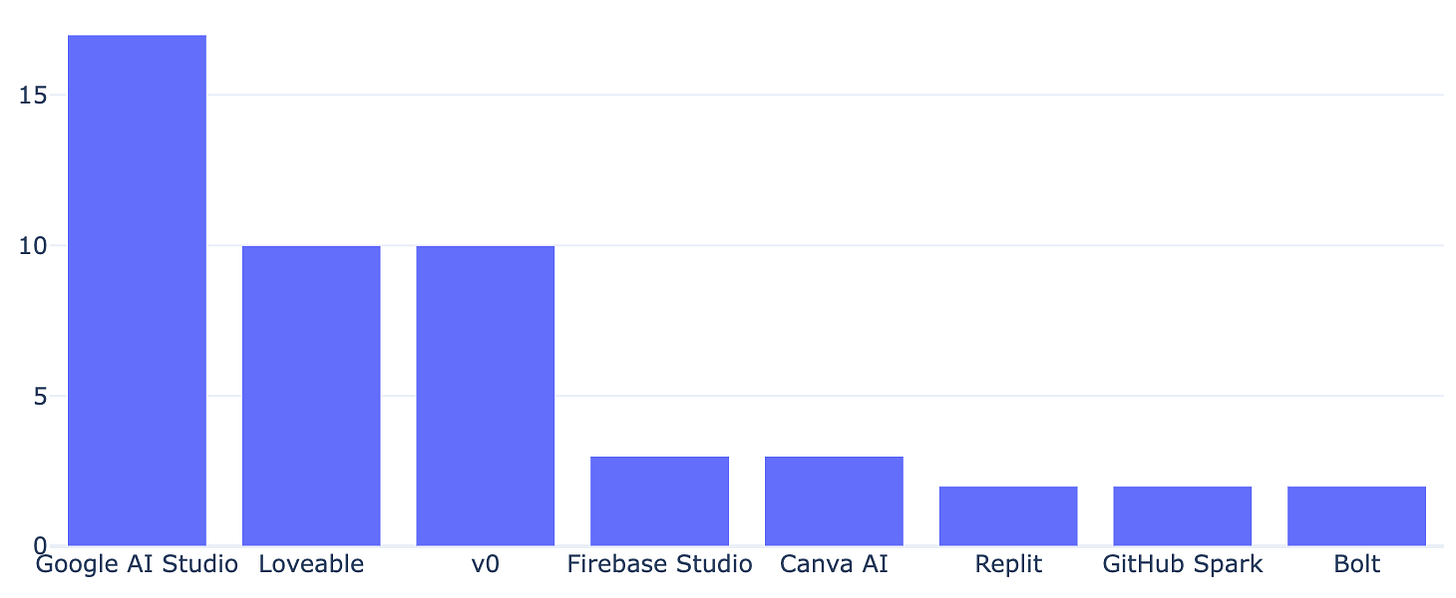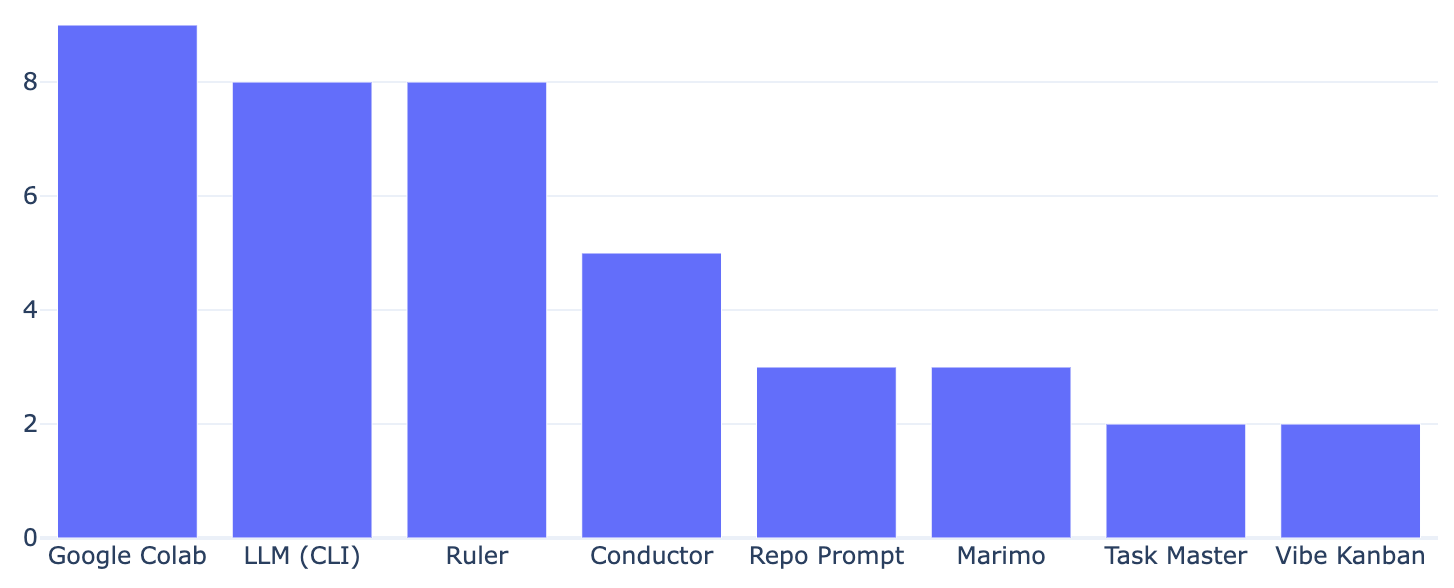AI Coding Toolbox — Survey Results
What Developers Are Actually Using for AI Coding in 2025
We ran an informal survey to find out what AI tools developers are using in their work. The survey was shared on social media and the course homepage.
As with all such surveys, there are sure to be some biases introduced as a result of the distribution of the survey and the people most motivated to participate. Responses came from a self-selected set of developers rather than a controlled panel, so treat this as a directional snapshot of real-world usage, not market share.
Below we report each category in the order presented, including adoption and the most-used tools. All results are reported as percentage of participants responding to the category or item.
Models
Adoption: 100%
Trailing: Claude 4.1 Opus, Qwen3 Coder, Gemini 2.5 Flash, GPT-4.1, GPT-5-mini, Grok Code Fast
Notes: Sonnet remains the undefeated leader in AI coding, but note how quickly GPT-5 gained adoption.
See Also: Complex Agentic Coding with Copilot: GPT-5 vs Claude 4 Sonnet, Optimize AI Model Usage by Phase
IDE
Adoption: 100%
Trailing: Zed, Windsurf
Notes: we were not surprised to see VSCode in the lead, but the gap to other IDEs, especially Cursor, is larger than we would have assumed based on public discourse in our feeds.
See Also: Cursor Tool Review, What are the key differences between IDE-focused tools and CLI-based agents?
Chatbots
Adoption: 93%
See Also: Writing Strong Content with AI
Terminal Agents
Adoption: 79%
Trailing: opencode, Warp, Qwen Code
Notes: Claude Code still has the significant lead appropriate for a category-defining product, but developers are also experimenting with many other terminal agents that are now available from multiple vendors and in many flavours.
See Also: Gemini CLI Tool Review, Codex CLI Tool Review, opencode Tool Review, Qwen Code Tool Review, Warp Tool Review, Amp vs Claude Code for Infra, You Can Just Do Things
Extensions
Adoption: 78%
Trailing: Gemini Code Assist
Notes: Roo Code surprises as #2, even above Cline. This category clearly has one strong lead and a long tail of options.
See Also: Complex Agentic Coding with Copilot: GPT-5 vs Claude 4 Sonnet, What are the key differences between IDE-focused tools and CLI-based agents?
Background Agents
Adoption: 40%
Trailing: Jules, OpenHands
Notes: adoption is still quite low, and OpenAI’s Codex has a narrow lead.
See Also: Working with Asynchronous Coding Agents, Asynchronous CLI Agents in GitHub Actions, OpenHands Agent Tool Review
Vibe Coding SaaS
Adoption: 39%
Notes: in hindsight, this question is ambiguous, since it’s not clear if respondents use Google’s AI Studio’s vibe-coding capabilities, or just use it in general. Still, not surprising that developers love AI Studio, Google has managed to create a great tool that lowers the barriers to adoption, and they top it with generous free tier usage.
See Also: Vibe Coding a Real Mobile App: We Put 'Vibe Code' to the Test
Other Tools
Adoption: 29%
Trailing: Repo Prompt, Marimo
Notes: this category is a mix of very different tools, and there’s not much to learn from relative values. Once again, it’s also not clear if respondents who chose Google Colab did so for its built-in AI coding capabilities, or just as a tool they use in general for working with notebooks. Eleanor is, of course, delighted to see so many of you using Ruler to manage your context and config across different agents.
See Also: Agentic Coding a FastHTML RAG Eval App, Generate ad-hoc Python scripts with LLM and UV
⚡ Moving from “vibe coding“ to professional AI-powered software development is one of the greatest opportunities for real quality and productivity boosts from AI. It requires a more deliberate approach, and some new techniques, but is an important addition to the toolbox of developers and engineering and product leads moving to an AI-native Software Development Lifecycle.
Our course, Elite AI-Assisted Coding covers these techniques in depth. Join us for a 3 week (12 live sessions) in-depth study of everything you need to build production-grade software with AI.


